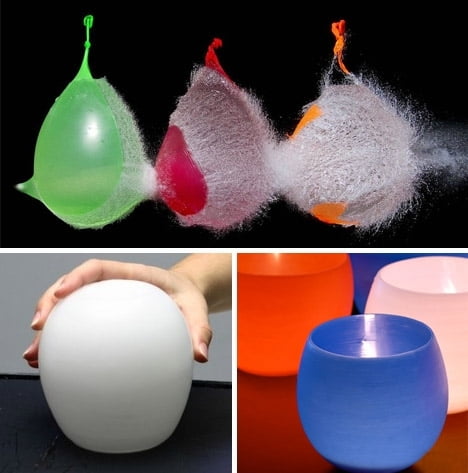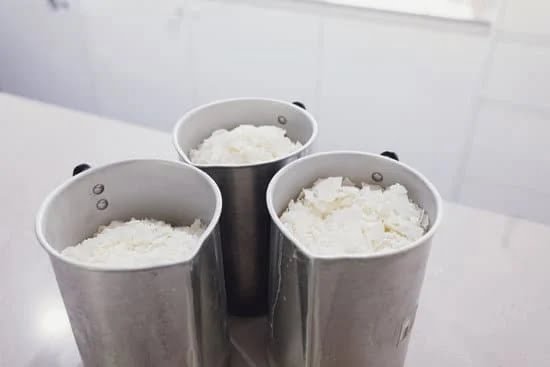Candle making in India has a rich history and a deep cultural significance. From being used in religious ceremonies and festivals to serving as sources of light, candles have been an integral part of Indian tradition for centuries. This article will delve into the art of candle making in India, exploring its history, traditional techniques, regional variations, and its growing industry.
The tradition of candle making in India dates back to ancient times, with documented evidence of its use in various rituals and daily life. Over the years, the craft has evolved to incorporate modern techniques while preserving traditional methods. The art of candle making is deeply rooted in Indian culture, playing a crucial role in festivals, ceremonies, and daily rituals.
In this article, we will explore the fascinating history of candle making in India from ancient times to the modern day. We will also delve into the traditional techniques that are still used today across the country, as well as the popular types of candle making specific to different regions of India.
Additionally, we will examine the importance of candle making in Indian culture and tradition, as well as sustainable and eco-friendly practices that are being adopted within the industry. Stay tuned as we take you on a journey through the enduring art and craft of candle making in India.
History of Candle Making in India
Candle making in India has a rich and fascinating history that dates back to ancient times. The tradition of making candles has been an integral part of Indian culture and tradition for centuries. The earliest evidence of candle making in India can be traced back to the Indus Valley Civilization, where archaeologists have discovered clay oil lamps and remnants of early candle-like objects.
In ancient India, candles were primarily made from natural materials such as beeswax, animal fat, and plant-based oils. These candles were used for various purposes, including religious ceremonies, lighting homes, and as a source of illumination for festivities and celebrations. Over time, the art of candle making evolved, incorporating new techniques and materials to create more versatile and decorative candles.
The modern-day candle making industry in India is a thriving and innovative sector that blends traditional methods with modern technologies. Artisans across the country continue to use age-old techniques to craft handmade candles, while contemporary manufacturers have embraced sustainable and eco-friendly practices to meet the demand for environmentally conscious products. The growing interest in homemade crafts and DIY projects has also contributed to the resurgence of interest in candle making in India.
| Year | Number of Candle Making Businesses |
|---|---|
| 2018 | Over 5000 |
| 2020 | Nearly 7000 |
Traditional Candle Making Techniques in India
Candle making has been a part of Indian culture for centuries, and the traditional techniques used in different regions of the country have been passed down through generations. One of the most common traditional candle making techniques in India is the use of beeswax and various natural oils to create aromatic candles. In the southern state of Kerala, for example, coconut oil is often used as a primary ingredient, giving the candles a distinct and pleasant aroma.
Another popular traditional technique involves using molds made from clay or wood to shape the candles. Artisans meticulously pour molten wax into these molds to create intricately designed candles that are not only functional but also serve as decorative items in Indian households. This technique is still practiced in regions such as Rajasthan and Uttar Pradesh, where candle making is not just a craft, but an art form that reflects the rich cultural heritage of India.
In addition to these methods, there are also traditional candle making techniques specific to certain festivals and religious ceremonies. For instance, during Diwali, the festival of lights, dipakas or oil lamps are made by hand using ghee (clarified butter) and cotton wicks. These intricate lamps hold great spiritual significance and are an essential part of the celebrations. Overall, traditional candle making techniques in India reflect not only a practical skill but also a deep connection to spirituality and tradition.
| Traditional Candle Making Techniques | Regions |
|---|---|
| Use of beeswax and natural oils | Kerala |
| Molds made from clay or wood | Rajasthan and Uttar Pradesh |
| Dipakas for Diwali | Throughout India |
Popular Types of Candle Making in Different Regions of India
India is a country rich in diversity, and this diversity is reflected in the various types of candle making practices found in different regions. Each region has its own unique styles, techniques, and designs that are deeply rooted in the local culture and tradition.
North India
In North India, especially in states like Punjab and Rajasthan, the traditional art of Punjabi candle making is well-known. These candles are typically hand-dipped using vibrant colors and are often decorated with intricate designs. In Rajasthan, artisans use traditional techniques to create beautifully carved candles with intricate patterns inspired by local textiles and architecture.
South India
In South India, particularly in the state of Tamil Nadu, the art of making temple candles has been practiced for centuries. These candles are an integral part of religious rituals and are made using a mix of pure ghee or wax. They are often adorned with flowers and incense during religious ceremonies.
East India
The eastern states like West Bengal have their own unique style of candle making known as “Tant Candle.” These candles are made using traditional handloom fabrics that reflect the rich cultural heritage of the region. The techniques used are passed down through generations, creating a sense of continuity and tradition in the craft.
Each region’s distinctive candle making traditions add to the overall tapestry of Indian culture while also providing livelihoods for countless artisans across the country. The popularity of these regional styles not only contributes to preserving age-old traditions but also adds to the vibrancy and colorfulness of Indian festivals and celebrations. It’s clear that candle making not only serves as a source of artistic expression but also plays an important role in connecting people with their heritage.
Importance of Candle Making in Indian Culture and Tradition
Candle making in India holds great significance in the country’s rich cultural and traditional practices. The art of crafting candles has been an integral part of Indian culture for centuries, playing a vital role in various rituals, religious ceremonies, and special occasions. From Diwali, the festival of lights, to wedding ceremonies and spiritual rituals, candles continue to hold a special place in Indian traditions.
Symbolism and Significance
In Indian culture, candles symbolize the triumph of light over darkness and are often used to invoke positive energy and dispel negativity. The flickering flame of a candle is believed to represent the divine presence and is used during prayers, meditation, and other spiritual practices. Candles are also considered auspicious items for attracting blessings and prosperity into homes and businesses.
Traditional Ceremonies and Festivals
The use of candles is deeply ingrained in various traditional ceremonies and festivals across India. During Diwali, families and communities light rows of colorful candles and clay lamps (diyas) to celebrate the triumph of good over evil. In addition, candles are also an essential part of religious rituals performed during weddings, funerals, and other important events in Indian culture.
Artistic Expression
Beyond their symbolic value, candle making is also a form of artistic expression in India. Skilled artisans often create intricately designed candles using techniques such as carving, sculpting, and embellishing with vibrant colors to produce stunning decorative pieces. These artistic candles are not only used for traditional purposes but also serve as unique home décor items that add beauty and charm to living spaces.
Overall, the importance of candle making in Indian culture and tradition extends beyond just creating light sources-it serves as a deeply rooted practice that embodies spirituality, symbolism, creativity, and artistry. As India continues to embrace its cultural heritage while embracing modernity, the art of candle making remains an enduring tradition that celebrates both past traditions and future innovation.
Sustainable and Eco-Friendly Candle Making Practices in India
Candle making has been a traditional craft in India for centuries, with methods and techniques passed down through generations. In recent years, there has been a growing interest in sustainable and eco-friendly practices within the candle making industry. This section will explore the efforts being made in India to promote environmentally friendly candle making.
Practices in Sustainable Candle Making
In response to the growing demand for eco-friendly products, candle makers in India are increasingly turning to sustainable practices. This includes using natural waxes such as soy wax, beeswax, or coconut wax instead of paraffin wax, which is derived from petroleum.
These natural waxes are not only better for the environment but also produce cleaner burning candles that do not release harmful toxins into the air. Additionally, many candle makers are now incorporating essential oils and natural fragrances into their products instead of synthetic chemicals.
Use of Recycled Materials
Another important aspect of sustainable candle making in India is the use of recycled materials. Many artisanal candle makers are sourcing containers and packaging from recycled materials such as glass jars, tin cans, or biodegradable materials. By repurposing these items, they are reducing waste and minimizing their environmental impact.
Supporting Local Communities
In addition to environmental considerations, sustainable candle making practices in India also prioritize supporting local communities. This may include sourcing raw materials from local farmers or artisans, creating employment opportunities for skilled craftsmen, or partnering with social enterprises that empower marginalized groups. By embracing sustainability in all aspects of their business, Indian candle makers are not only contributing to environmental conservation but also promoting social responsibility within the industry.
Growth and Development of the Candle Making Industry in India
The candle making industry in India has experienced significant growth and development in recent years, driven by a combination of factors such as increasing demand for scented and decorative candles, rising disposable incomes, and the growing trend towards eco-friendly and sustainable products. This section will explore the key aspects of this growth and development, including market trends, technological advancements, and the impact of government policies on the industry.
One of the major drivers of growth in the candle making industry in India has been the increasing popularity of scented and decorative candles. Consumers are increasingly seeking unique and aesthetically pleasing candle products for home decor, aromatherapy, and gifting purposes. As a result, manufacturers have been focusing on developing innovative designs, fragrances, and packaging to meet this demand.
Moreover, the Indian government’s initiatives to promote small-scale industries and entrepreneurship have also contributed to the expansion of the candle making sector. Through schemes like “Make in India” and various financial incentives for small businesses, aspiring candle makers have been able to enter the market with relative ease. This has led to a surge in the number of small-scale candle making units across different regions of India.
In addition to traditional methods, technological advancements have played a crucial role in enhancing production efficiency and product quality within the Indian candle making industry. From automated pouring systems to advanced fragrance blending technologies, manufacturers are embracing modern equipment and processes to streamline their operations. This not only increases their output capacity but also ensures consistent product quality that meets international standards.
- Market trends
- Impact of government policies
- Technological advancements
How to Start Your Own Candle Making Business in India
Starting your own candle making business in India can be a rewarding venture, especially considering the rich tradition and importance of candle making in Indian culture. There are several key steps to consider when embarking on this exciting journey.
First, it is essential to conduct thorough market research to understand the demand for different types of candles in different regions of India. This will help you determine which types of candles to produce and which target market to focus on. Additionally, understanding the competition and identifying gaps in the market will give you a competitive advantage.
Next, you will need to acquire the necessary skills and knowledge for candle making. This may involve taking courses or workshops on traditional and modern candle making techniques, as well as learning about sustainable and eco-friendly practices. It is important to master the art of candle making to ensure that your products are of high quality.
After acquiring the necessary skills, it is essential to develop a business plan that outlines your goals, target market, marketing strategies, financial projections, and operational plan. Securing funding or investment for your business may also be necessary to purchase equipment, raw materials, and set up production facilities. Once these steps are completed, you will be well on your way to starting your own successful candle making business in India.
The Future of Candle Making in India
The art of candle making in India has a rich and diverse history, with traditional techniques being passed down through generations. However, in the modern day, there are exciting trends and innovations shaping the future of candle making in India. One such trend is the growing demand for sustainable and eco-friendly candles. As more consumers become conscious of their environmental impact, there is a shift towards using natural and biodegradable materials in candle production.
Another trend that is gaining momentum in the candle making industry in India is the use of innovative designs and fragrances. With an increasing focus on aesthetics and sensory experiences, candle makers are constantly experimenting with new shapes, colors, and scents to appeal to a wider audience. This has led to the rise of artisanal and luxury candles that not only illuminate a space but also elevate it visually and aromatically.
Furthermore, technology has played a significant role in shaping the future of candle making in India. From advanced equipment for production to online platforms for selling, the industry is embracing digitalization to reach a larger market. This has opened up opportunities for small-scale entrepreneurs to enter the market and showcase their unique creations to a global audience.
Overall, the future of candle making in India looks promising as it continues to evolve with changing consumer preferences, technological advancements, and environmental awareness. The industry’s ability to adapt to these trends and innovations will determine its continued growth and success in the years to come.
Conclusion
In conclusion, the art and craft of candle making in India have a rich history and cultural significance that have endured through ancient times to the modern day. From traditional techniques passed down through generations to innovative and eco-friendly practices, the candle making industry in India continues to thrive and evolve.
With its deep roots in Indian culture and tradition, candle making plays a significant role in various religious, spiritual, and festive celebrations across different regions of India. The diverse types of candles made in different parts of the country reflect the unique customs and beliefs of each community, further highlighting the importance of this craft in Indian society.
As the demand for sustainable and environmentally friendly products continues to grow, there is a promising future for the candle making industry in India. With an emphasis on natural materials and ethical production practices, there is great potential for growth and innovation in this field. For those interested in entering the industry, starting a candle making business in India offers opportunities for creativity and entrepreneurship while contributing to the preservation of this enduring art form.
The enduring legacy of candle making in India serves as a testament to its cultural significance and relevance in today’s world. As trends and innovations continue to shape the industry, it is clear that this timeless craft will continue to shine brightly for years to come.
Frequently Asked Questions
Is Candle Making Profitable in India?
Candle making can be profitable in India as there is a growing demand for unique, scented, and decorative candles. With the right marketing and product differentiation, one can establish a successful candle-making business in India.
Do I Need a License to Sell Homemade Candles in India?
In India, it is essential to obtain a license from the local municipal authority to sell homemade candles. The license ensures that the products meet safety standards and are suitable for consumer use. This requirement helps maintain quality control within the industry.
How Big Is Candle Industry in India?
The candle industry in India is substantial, with a significant number of small-scale and large-scale manufacturers catering to both domestic and international markets. The industry sees consistent growth due to various uses of candles in religious ceremonies, festivals, decorations, and aromatherapy. This demand contributes to the overall size of the candle industry in India.

Welcome to my candle making blog! In this blog, I will be sharing my tips and tricks for making candles. I will also be sharing some of my favorite recipes.





